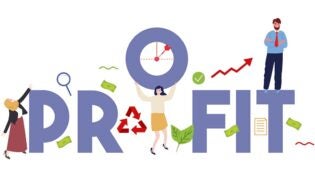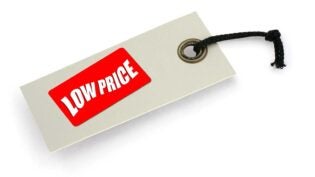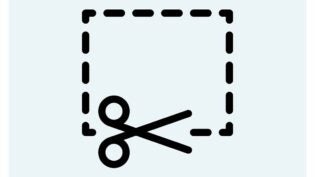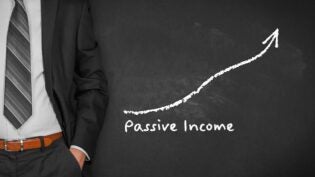Home > Finance > Pricing Strategy >
Guide to Smart Pricing: What Are You Really Worth?
By: Danny Iny
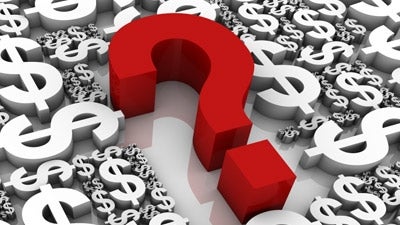
Getting your pricing just right is tricky. There are big downsides to keeping your prices too low. But it’s easy to raise them too high for people to buy anything anymore.
There are some basic ways to look at pricing and pick the “right price.” Everyone repeats those methods whenever pricing is discussed.
However, “look at your competitors” doesn’t really help you to find the right prices unless you only aim to be the cheapest. So, how do you find the perfect prices for your products and services?
7 Problems You Create With Low Prices
People sometimes think, “I’ll cut my prices so more people will buy…” Think again. Here are just seven reasons why you shouldn’t aim to offer the lowest prices you can possibly survive with:
- You cut your profit margins. Do you know how much—exactly—your profit margins are now? If your margin is now $50 on a $100 product and you cut the price by $25, you lose 50% of your net profit.
- You can’t invest. Low profit margins mean that you can’t invest in anything. Any additional marketing expense, for example, leads to even smaller margins, which is unsustainable if you already have small margins.
- You need to attract more customers. You won’t automatically get more customers when you lower your prices. The lower prices just make it a little easier for people to buy. You need many more people to make the buying decision for you to get to the level you were on with higher prices.
- You lower your product’s perceived value. Like it or not, people almost always expect an expensive product to be better than a cheap one. Discounting your products too much can even make you lose customers (instead of getting more of them).
- You can attract the wrong customers. This isn’t necessarily a problem for you. But if you aim to attract clients who could afford a more expensive option, you’re likely to lose them with low prices if the pricing makes you seem inexperienced, low-quality, or unprofessional.
- You can end up with “bad” clients. People who are willing to pay a premium price for your products and services generally appreciate them more than those who are only willing to pay a bargain. Which group do you want to attract?
- You start competing on price. If your products are a good choice just because they’re cheap, anyone can put you out of business by offering even lower prices. It’s certainly possible to make a great profit by selling lots of low-margin products, but it’s extremely difficult to make that business model work.
So, when you’re thinking of how much you should charge, don’t look for the lowest price you can live with. Rather, look for the optimal balance between price and number of sales.
How Much Could You Earn Doing Something Else?
This is a good place to start when you consider your prices. It doesn’t help you pinpoint the right pricing, but it gives you at least something to compare your prices to.
This is easier to calculate if you sell services. But it applies to products as well. First, what if you sell services:
- Look at each service separately.
- Count the time it takes to complete a project (remember to include all the time it took to get the project and everything you actually do during the project).
- Count how much money the project costs you (including advertising, client lunches, etc.).
- Deduct your real costs from the project fee and divide the result with the hours you spend on it.
You should be left with a fairly good estimate of your hourly rate for each type of service you sell.
When you consider offering a new service, estimate the real hourly rate you can make with it. Sometimes you can justify going well below your best hourly rates. But usually sticking close to your current rates—or going a bit over them—is a safe bet.
But what if you sell products?
This is a much more complicated calculation. But let’s look at an example.
Let’s say you build an information product around your expertise—an ebook called, “How to build your own guitar.” It takes you 250 hours to finish.
Estimate how much you can earn from it: How many can you sell? How much can you charge? How much will your payment processor take (or if you use PayPal, remember to count how much they steal on top of the normal fee)? Will there be refunds (and how much do they cost you)? Will you pay for advertising? Are there delivery costs? And how much time will selling it take (and is there need for customer support)?
Putting all that together, you might end up with something like this:
- 250 hours to create the product
- 10 hours per 30 sales for marketing, selling, and customer support
- 30 sales per month
- 5% cut for payment processor
- $2 advertising cost per sale
- And the price is $67
That means your hourly rate for the whole project is $7.11 after the first month. After six months (assuming nothing changes), your hourly rate goes up to $35.80. After a year you’re even higher ($59.98/hour). But that kind of a system is very difficult to build and maintain. And maybe you could get $200/hour for selling services.
That’s all to say that “passive income” isn’t necessarily quite as passive as you might think. And if you’re building products to “make money while you sleep,” you might end up earning way less than you would with something else.
That being said, your hourly rate isn’t the only thing you should consider.
What’s The Real Value of What You Sell?
Consultants are the prime offenders of this rule, and they often lose huge opportunities because of it. But the same thing often happens in almost every industry you can think of.
Let’s say you sell technical consulting services. A specific project takes you two full weeks to finish (80 hours), and your normal rate is $70/hour. So, based on the hourly-rate-thinking, you should charge $5,600 or maybe round it up to $6,000.
But what’s the real value of your service to the client? What if they save $10,000 per month because of the work you do for them? Even if you charged $100,000, the fee would still make perfect sense for them.
You’re basically losing $94,000 in that one project (if you’d have the guts to ask for $100,000 = $1,250/hour).
You shouldn’t just directly jump to the highest fee you can justify. But you should know what it is. Or rather, you should know what’s the perceived value of your product or service to the client before you set your price.
But the perceived value isn’t only about the money you help them make or save.
What Are The Reasons People Choose You?
I hope you’re not aiming to get customers by offering the lowest prices. It’s not a very good business model for most of us. But if not because of low price, then why should people buy from you?
Your products and services have to be the best in at least one way, and people have to understand what it is. If they don’t understand what makes you the best option, they’ll never buy from you.
Are your products the most durable? Can your software do things others can’t? Is your service the most comprehensive? Are you the fastest to finish the project? Are you specializing in something others don’t understand?
Your products’ and services’ perceived value is based on your customers’ preferences. If they want something that you provide more, better, or faster than anyone else, they’re happy to pay extra to get it rather than buying the cheapest option.
You have to know what makes your products worth buying in your customers’ eyes—even if you don’t have any customers yet (then think of your target customers).
When you know the reasons people choose you, you can focus your marketing on those reasons. And you can justify your prices much more easily than if you’re just guessing why people consider buying from you.
To find the right pricing for your products and services, you have to consider how much your target customers value the different reasons for buying from you. And compare your products to the competing options.
For example, people are rarely willing to pay extra to get a product in a specific color that only you sell. But if your product lasts twice as long as the closest competitors, you can justify a premium price.
Try this quick 5-step system to find the core reasons your target customers should pay attention to you, join your list, or buy from you.
You can then focus your marketing on the ideas that are most likely to push people to action, and you can raise your prices to the level people are comfortable paying you.
When you’ve looked at your prices through all these lenses, you should have a much better idea of what you should charge.
This article was originally published by Firepole Marketing
Right now Peter Sandeen is dodging icebergs while sailing with his wife and dogs on the Finnish coast. But you can download the 5-step system for finding the core of your value proposition quickly, so you’ll know what people need to hear to notice you, join your list, and buy from you.
Published: October 16, 2013
2669 Views
2669 Views






